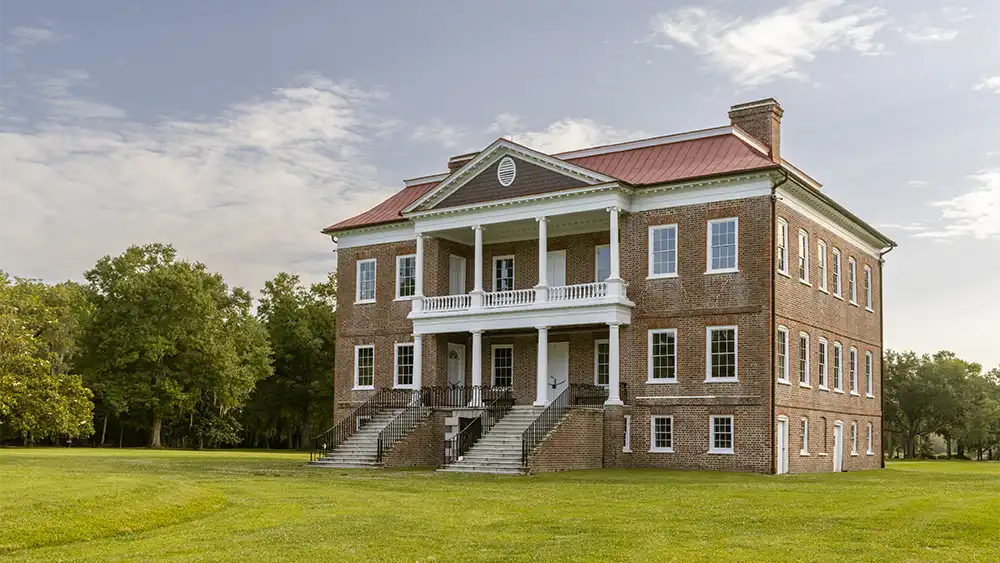
The earliest and finest example of Palladian architecture in the United States, Drayton Hall has housed seven generations within its walls throughout the centuries. Situated along the banks of the Ashley River, the tract of land was purchased in 1738 by John Drayton, the son of a leading colonial family who created generational wealth by facilitating slavery. Documents from the 18th century indicate that Drayton controlled more than 100 commercial plantations spanning 76,000 acres of land. Historians estimate he also owned thousands of slaves.
In 1784, Drayton’s second son Charles took up residence at Drayton Hall with his wife, Hester Middleton. Charles’s diary references several skilled artisans by name, possibly reflecting that a stratified enslaved society was in operation on the plantation. Toby and Quash, he wrote, were carpenters, Dumplin was the cook and George, the butler.
Although the Civil War ended the slave trade and thus the harvesting of the wealth-producing rice crop, many of the freed African American families remained on the Drayton Hall property. Over the decades they kept Drayton Hall alive by raising children, maintaining their houses and the landscape, cooking, farming and gardening. Unlike many other plantations that fell into disrepair in the late 19th and early 20th centuries, Drayton Hall was never abandoned, nor did it sit idle. Some descendants lived on the estate until as late as 1960.
As a result, it was never necessary to restore the mansion. Consequently, historians have had the rare opportunity to study materials and designs from every period of the house’s history, even dating back to the time of construction. A collection of archaeological finds, archives and decorative arts tells the story of the estate’s curation, a life of privilege, the harsh realities of plantation life and an encroaching war. By investigating the main house and its surrounding areas including the African American cemetery, the late 18th-century privy building, the 20th-century freedmen’s village and the former garden house and colonnades, staff archaeologists are continually discovering new information about the residents of Drayton Hall. Excavations have yielded artifacts that provide invaluable insight into the undocumented lives of the Native Americans and Africans who lived on the land during the 17th, 18th and 19th centuries.
A visit to Drayton Hall requires more than a tour of the home. Take time to explore the display of internationally significant furniture, artwork, manuscripts and archaeological finds in the Steven and Laura Gates Exhibit Gallery. Then stroll through the Lenhardt Courtyard Garden, surrounded by historically accurate botanicals. Peruse the gift shop’s curated selection of high-end art reproductions, an extensive collection of porcelain, books, jewelry, local food favorites and more.
Marketing director Patty Sailer explained what to expect from the overall experience. “Drayton Hall Preservation Trust fosters a deeper understanding of colonial America and the evolution of life in the South by discovering, researching, conserving and interpreting the history, context and culture of Drayton Hall,” she said.
For more information, visit draytonhall.org.
By Sarah Rose



Leave a Reply